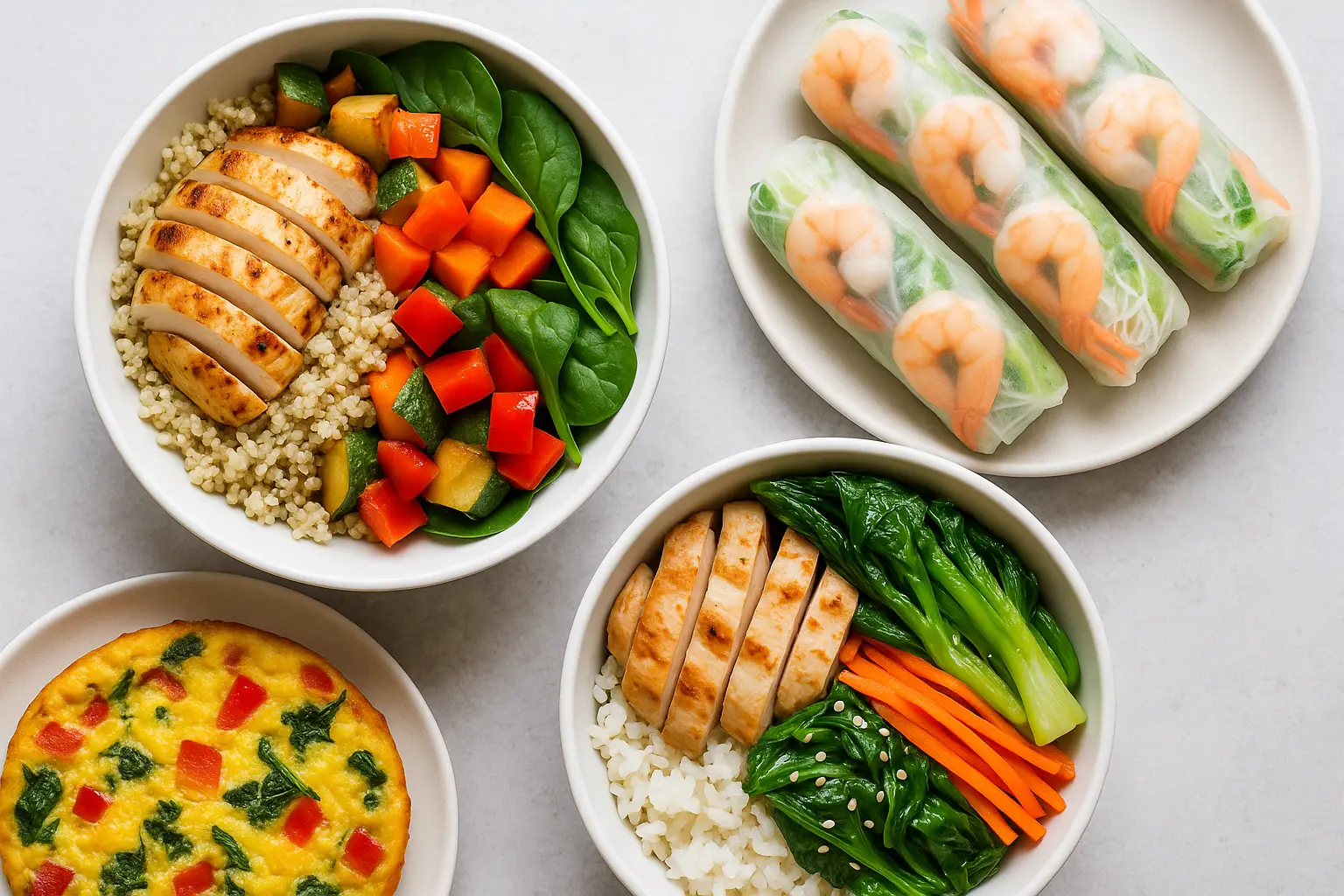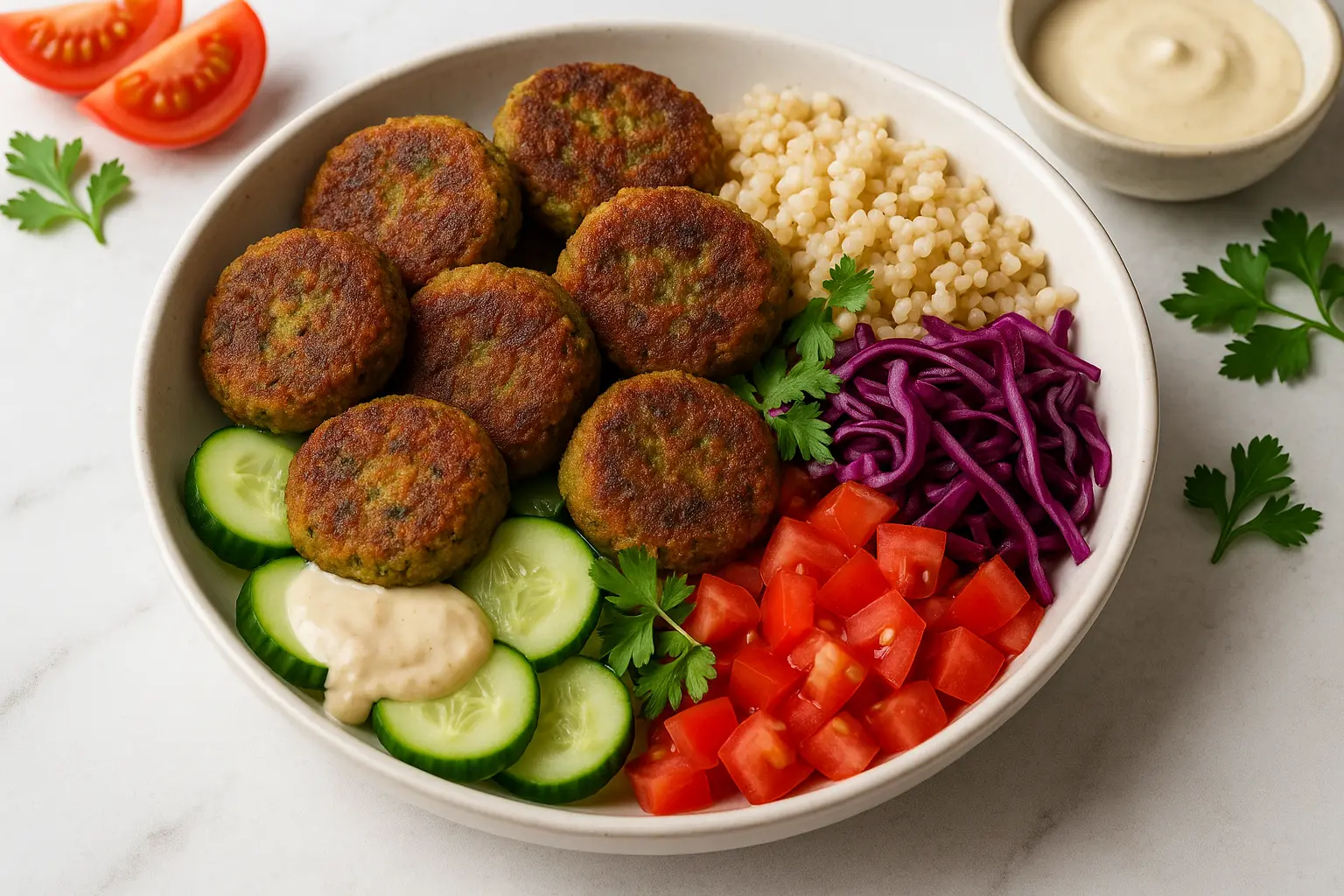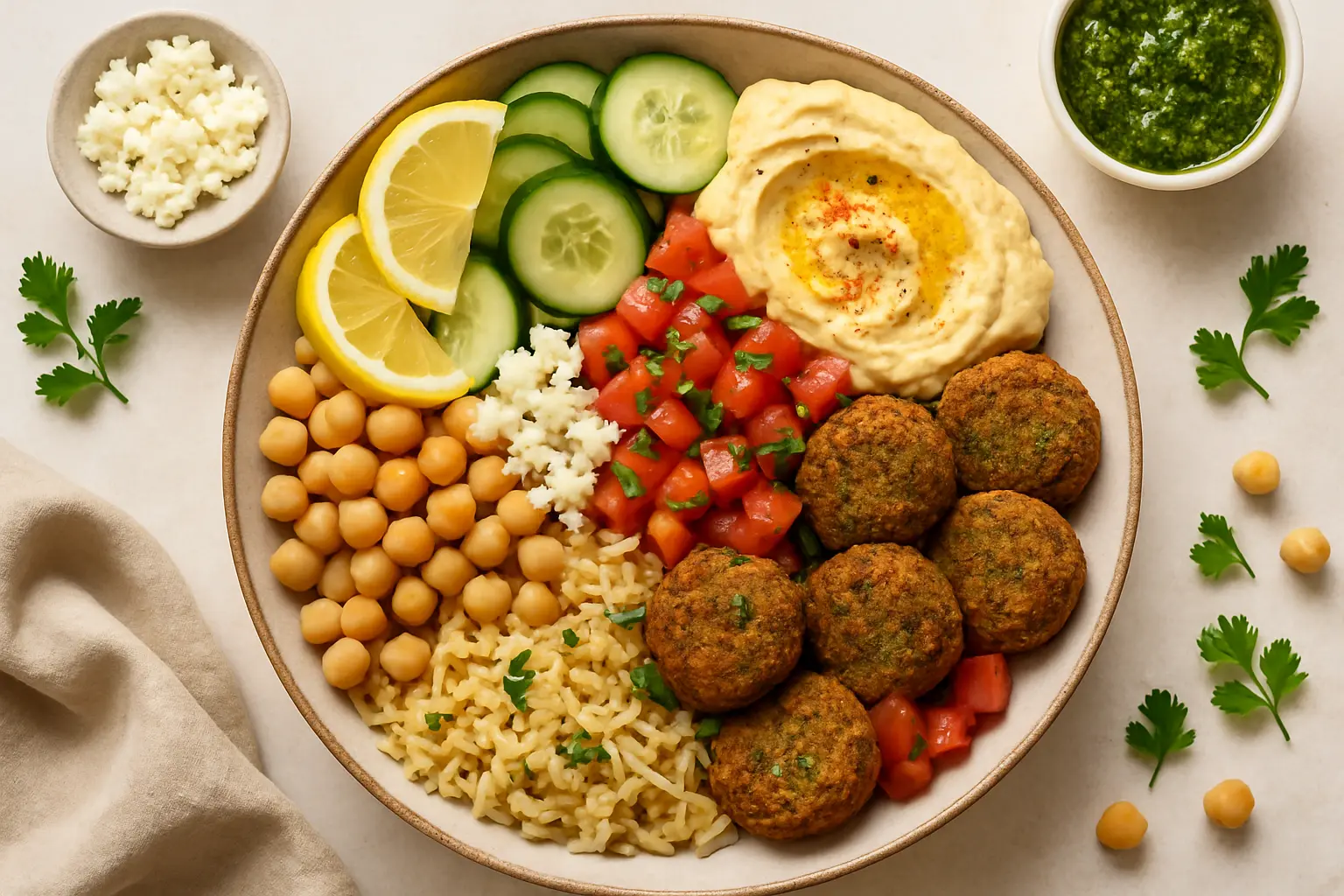For many people managing irritable bowel syndrome (IBS) or digestive discomfort, the low-FODMAP diet can be life-changing. FODMAPs—fermentable oligosaccharides, disaccharides, monosaccharides, and polyols—are types of carbohydrates that can trigger bloating, gas, and pain in sensitive guts.
But here’s the catch: following a low-FODMAP diet often feels overwhelming, especially at lunchtime. Work, school, or busy schedules demand quick, portable, and nourishing meals. The good news? Eating low-FODMAP doesn’t mean giving up flavor, texture, or satisfaction. With the right recipes and planning, your lunches can be both gut-friendly and exciting.
This guide explores the science of low-FODMAP eating, practical meal prep tips, and a collection of flavorful recipes—from wraps and grain bowls to soups and salads—that prove lunch can feel indulgent without causing discomfort.

Understanding the Low-FODMAP Diet
What Are FODMAPs?
FODMAPs are short-chain carbohydrates that resist digestion in the small intestine and ferment in the large intestine. While this process is harmless for most people, those with IBS may experience bloating, cramps, diarrhea, or constipation.
Why Lunchtime Is Tricky
- Limited options at restaurants and cafes.
- Many grab-and-go lunches include high-FODMAP ingredients like onions, garlic, wheat, or beans.
- Balancing satiety and variety while avoiding triggers requires planning.
The Goal
To create balanced meals with:
- Lean proteins (chicken, eggs, tofu, tempeh).
- Low-FODMAP grains (quinoa, rice, gluten-free bread).
- Safe vegetables and fruits (carrots, spinach, zucchini, grapes, strawberries).
- Healthy fats (olive oil, avocado in small portions, nuts like walnuts or pecans).
Principles of Building a Low-FODMAP Lunch
- Base: Choose a low-FODMAP grain or leafy greens.
- Protein: Add satiety with eggs, chicken, fish, or tempeh.
- Veggies: Focus on gut-friendly options like bell peppers, cucumber, spinach, and zucchini.
- Flavor: Use garlic-infused oil, herbs, and spices instead of onion and garlic.
- Balance: Include carbs, proteins, and fats to avoid afternoon energy crashes.
Recipe Collection: Low-FODMAP Lunches
1. Quinoa & Roast Vegetable Grain Bowl
A hearty, nutrient-packed bowl that’s customizable and satisfying.
- Base: Cooked quinoa.
- Veggies: Roasted zucchini, bell peppers, carrots.
- Protein: Grilled chicken breast or baked tofu.
- Dressing: Lemon-olive oil with herbs.
This bowl delivers fiber without triggering FODMAP sensitivity.
2. Low-FODMAP Chicken Salad Wraps
Forget bland wraps—these are zesty and portable.
- Use gluten-free tortillas.
- Fill with shredded chicken, lettuce, cucumber, grated carrot.
- Add garlic-infused mayo or a light yogurt-based dressing.
These wraps make the perfect work lunchbox staple.
3. Mediterranean Lentil Salad (FODMAP-Safe Version)
Traditional lentils can be high-FODMAP, but canned lentils (drained and rinsed) in small amounts are safe.
- Toss with spinach, cherry tomatoes, cucumber, and feta.
- Drizzle with olive oil and lemon juice.
- Add quinoa for extra bulk.
This dish offers protein, fiber, and Mediterranean freshness.
4. Zucchini Noodle Stir-Fry
A low-carb, light lunch idea.
- Spiralized zucchini sautéed with tamari, carrots, bok choy, and scrambled egg.
- Flavor with sesame oil and ginger.
- Top with sesame seeds.
This stir-fry is quick to cook and gentle on digestion.
5. Baked Salmon with Rice & Greens
A simple yet elegant meal-prep option.
- Bake salmon fillets with lemon and herbs.
- Pair with steamed rice and sautéed spinach.
- Finish with a drizzle of garlic-infused olive oil.
Packed with omega-3s and easy to portion for the week.
6. Tofu & Vegetable Curry (Low-FODMAP Adaptation)
Traditional curries often include onion and garlic, but this version avoids them without losing flavor.
- Base: Coconut milk and curry powder.
- Add tofu cubes, zucchini, carrots, and green beans.
- Serve with basmati rice.
Warm, comforting, and filling.
7. Egg & Spinach Frittata Slices
Perfect for meal prep—bake a tray, cut into slices, and store.
- Eggs, spinach, red bell pepper, and lactose-free cheese.
- Bake until golden.
- Store in the fridge for 3–4 days.
A protein-rich grab-and-go lunch.
8. Rice Paper Rolls with Shrimp
Light and refreshing.
- Fill rice paper wrappers with shrimp, lettuce, carrots, cucumber, and vermicelli noodles.
- Serve with a low-FODMAP peanut dipping sauce (use smooth peanut butter, soy sauce, and lime).
A portable option that feels restaurant-worthy.
9. Chickpea-Free Hummus with Veggie Dippers
Chickpeas are high-FODMAP, but you can make “hummus” from roasted carrots or zucchini blended with tahini, lemon, and garlic-infused oil.
- Pair with gluten-free crackers and cucumber sticks.
- Perfect for a quick desk-friendly lunch.
10. Asian-Inspired Chicken Rice Bowl
- Cooked jasmine rice topped with grilled chicken.
- Add sautéed bok choy and carrots.
- Drizzle with tamari and sesame oil.
Balanced, flavorful, and IBS-friendly.
Meal Prep Tips for Success
- Batch Cook Proteins: Grill chicken or bake tofu in bulk.
- Pre-Chop Veggies: Store in airtight containers for easy assembly.
- Mix & Match: Keep components separate, then combine for variety.
- Portable Containers: Bento-style lunch boxes keep everything fresh.
Avoiding the “Restrictive” Mindset
Many people on the low-FODMAP diet feel they’re missing out. But think of it differently:
- It’s not about what you can’t eat, but how to make the most of what you can.
- Experiment with global cuisines—Japanese, Thai, Mediterranean—all adaptable to low-FODMAP.
- Focus on vibrant colors, herbs, and safe flavor boosters (ginger, chives, infused oils).
Sample 5-Day Low-FODMAP Lunch Plan
Day 1: Chicken salad wrap + side of strawberries.
Day 2: Quinoa bowl with roasted vegetables and feta.
Day 3: Zucchini stir-fry with egg.
Day 4: Rice paper rolls with shrimp.
Day 5: Frittata slice + side salad with grapes.
This plan balances variety, nutrients, and digestive comfort.
Conclusion: Freedom in Food Choices
Low-FODMAP lunches don’t need to feel bland or repetitive. With smart swaps, flavor-forward recipes, and a little prep, you can enjoy exciting, diverse meals that fuel your day without triggering discomfort. Think beyond restriction—view the diet as an opportunity to discover new flavors and creative approaches to cooking.
Leave a comment
Your email address will not be published. Required fields are marked *




















